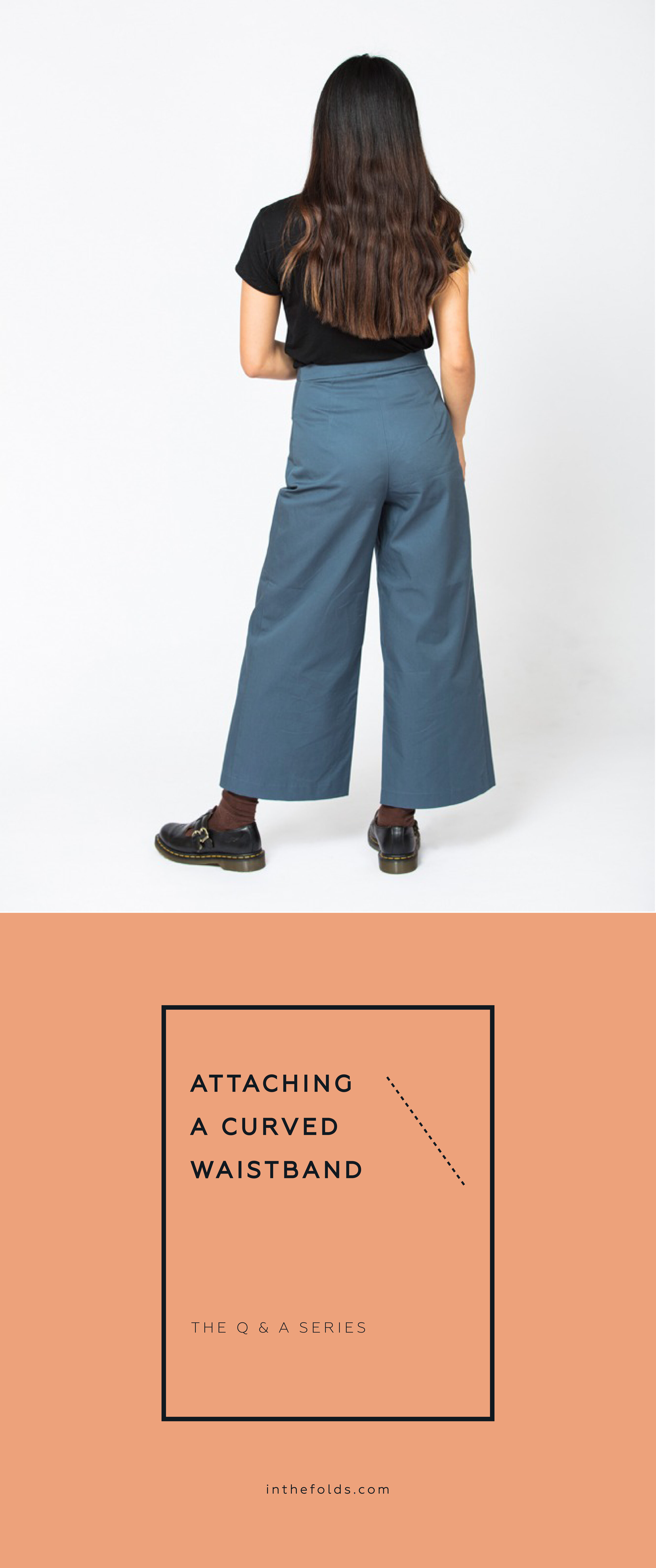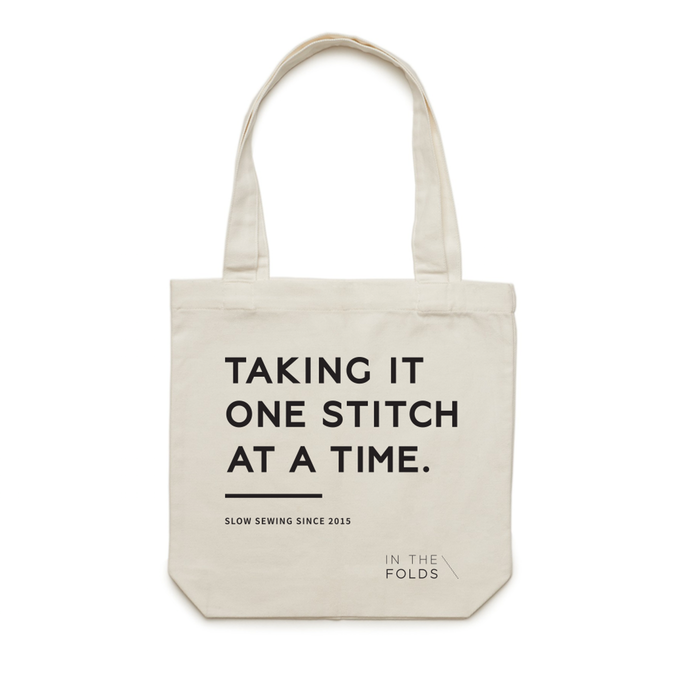THE Q & A SERIES - ATTACHING A CURVED WAISTBAND (THE PEPPERMINT WIDE LEG PANTS)
Hello,
I am making the free pattern for the wide leg pants. Thank you for making this available.
I am having a problem fitting the waistband to the pants. I have cut out a straight size D. I know that the pants need to be eased into the smaller waistband but it seems like there is too much pant to ease into the band.
I have double checked to see that I have cut out the correct pieces, and I have. I’ve also checked that I have sewn the darts correctly, and I believe I have. I have even reduced the seam allowance on the waistband to 1/4 inch. There still seems to still be over an inch of ease.
Do you have any suggestions that might help me with this, I’m really stumped.
- Donna
Hi Donna,
Thank you for reaching out.
I am pleased to hear you are making the Wide leg pants!
The stitch line on both the pants and the waistband is exactly the same length, but due to the seam allowance, it does take a little bit of easing to get the waistband to fit the pants.
Reducing the seam allowance to 6mm (1/4in) will actually increase the problem. As the curves are two different shapes, the cut edges of the two sections (the pants and the waistband) are different lengths - it is only when you attach them right at the correct point (1cm / 3/8in from the cut edge) that the two curves become exactly the same length.
One question that comes to mind is have you got the waistband the right way up? When I was testing the Darlow pants pattern this was a common mistake testers made, putting the top of the waistband on the pants. Please see the image above, that highlights the edge that is connected to the pants.
If it is the right way up, then I'd be checking your cut pieces against the pattern and making sure that the waist of the pants hasn't stretched out during the process. It is also a good idea to check your darts are sewn at the correct width and also re-check all your seam allowances are correct.
I hope that helps. Let me know how you go!
Happy sewing,
Emily
RESOURCES MENTIONED IN THIS ISSUE
Free pattern - the Peppermint Wide Leg Pants. Download pattern here.
Darlow Pants. Get the pattern here.
P.S. Would you like to know what the Q & A series is all about? This page tells you a little bit more about the motive behind the series.
Don't have a question, but found this newsletter helpful? I'd love to hear from you! Get in touch and say hi.


























